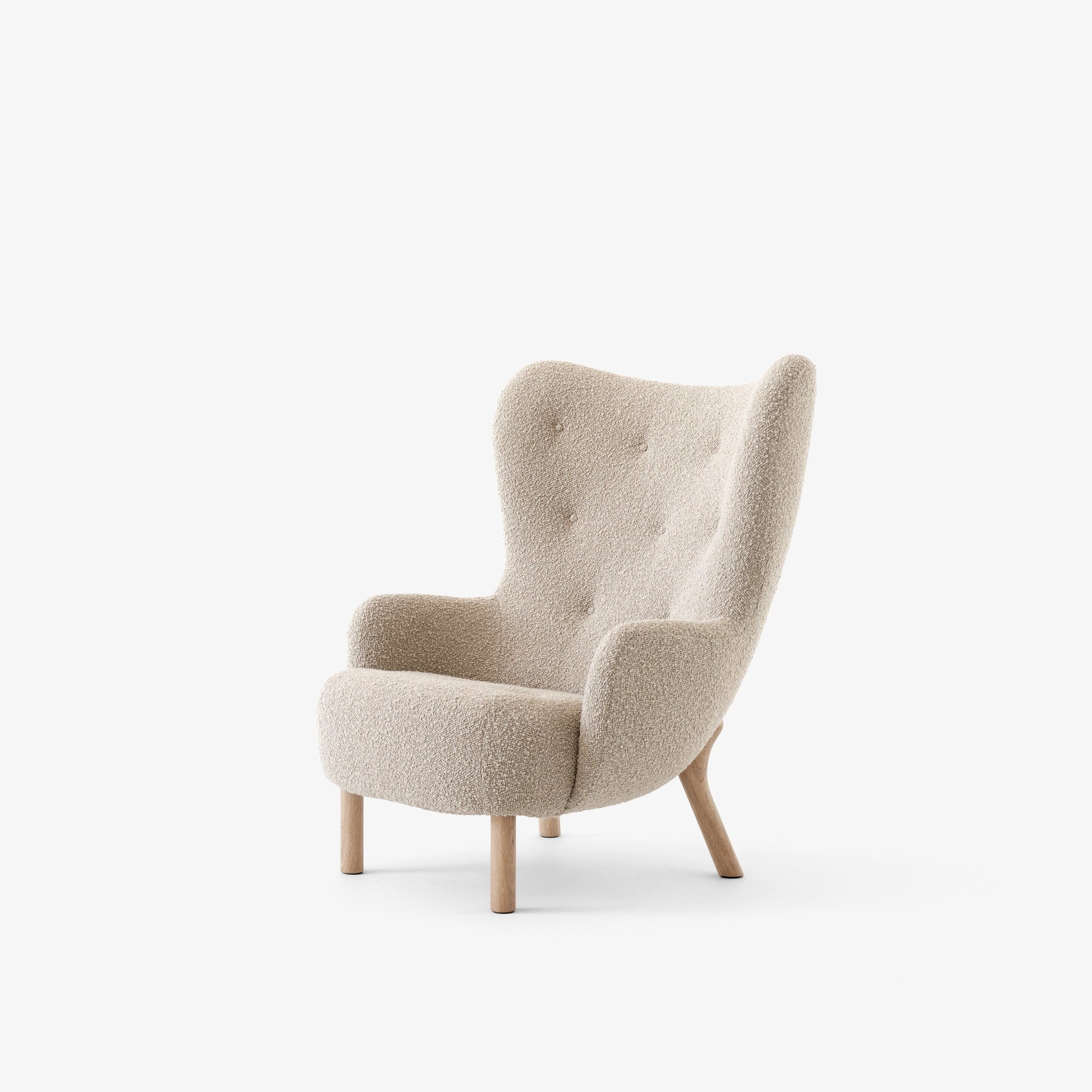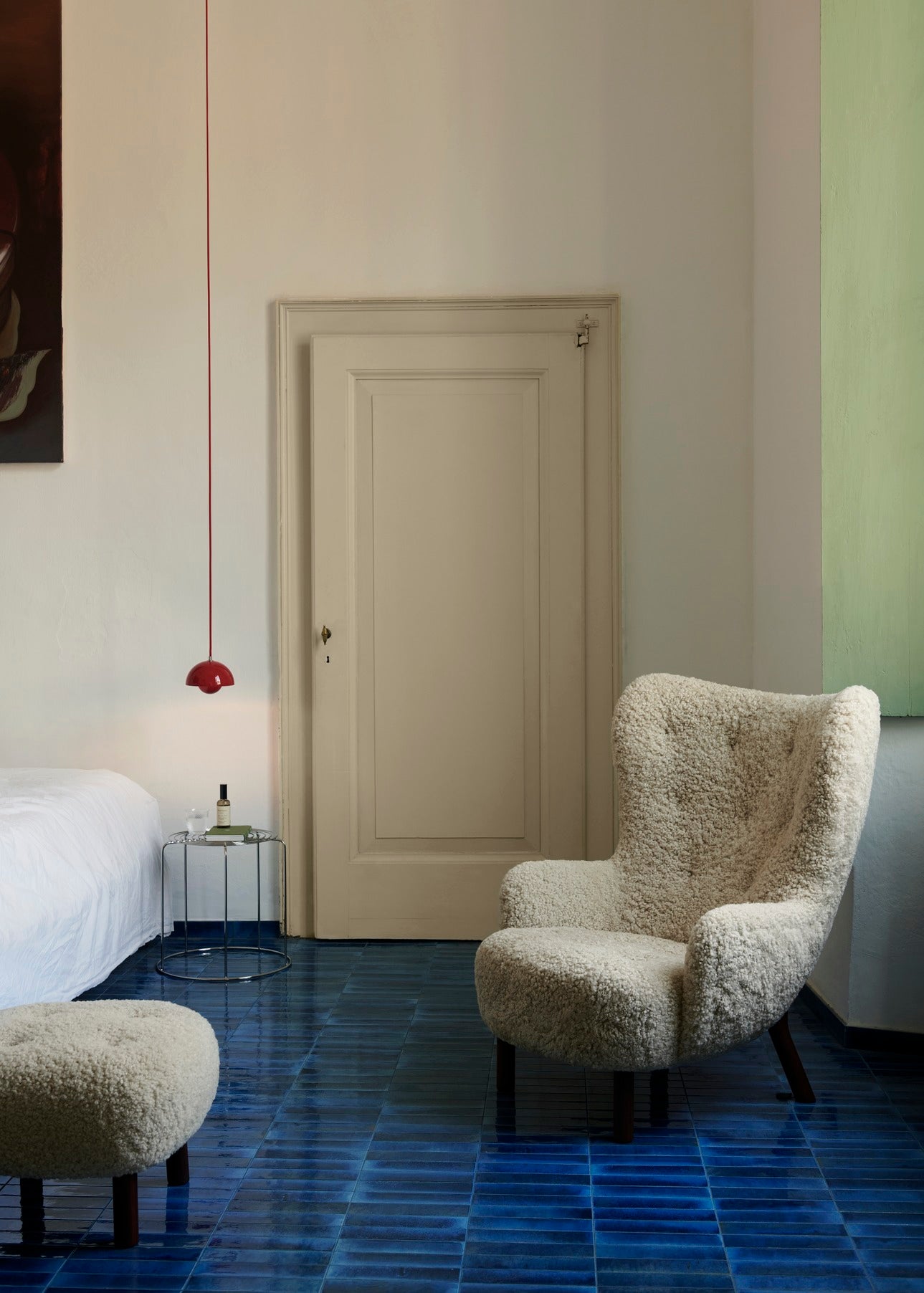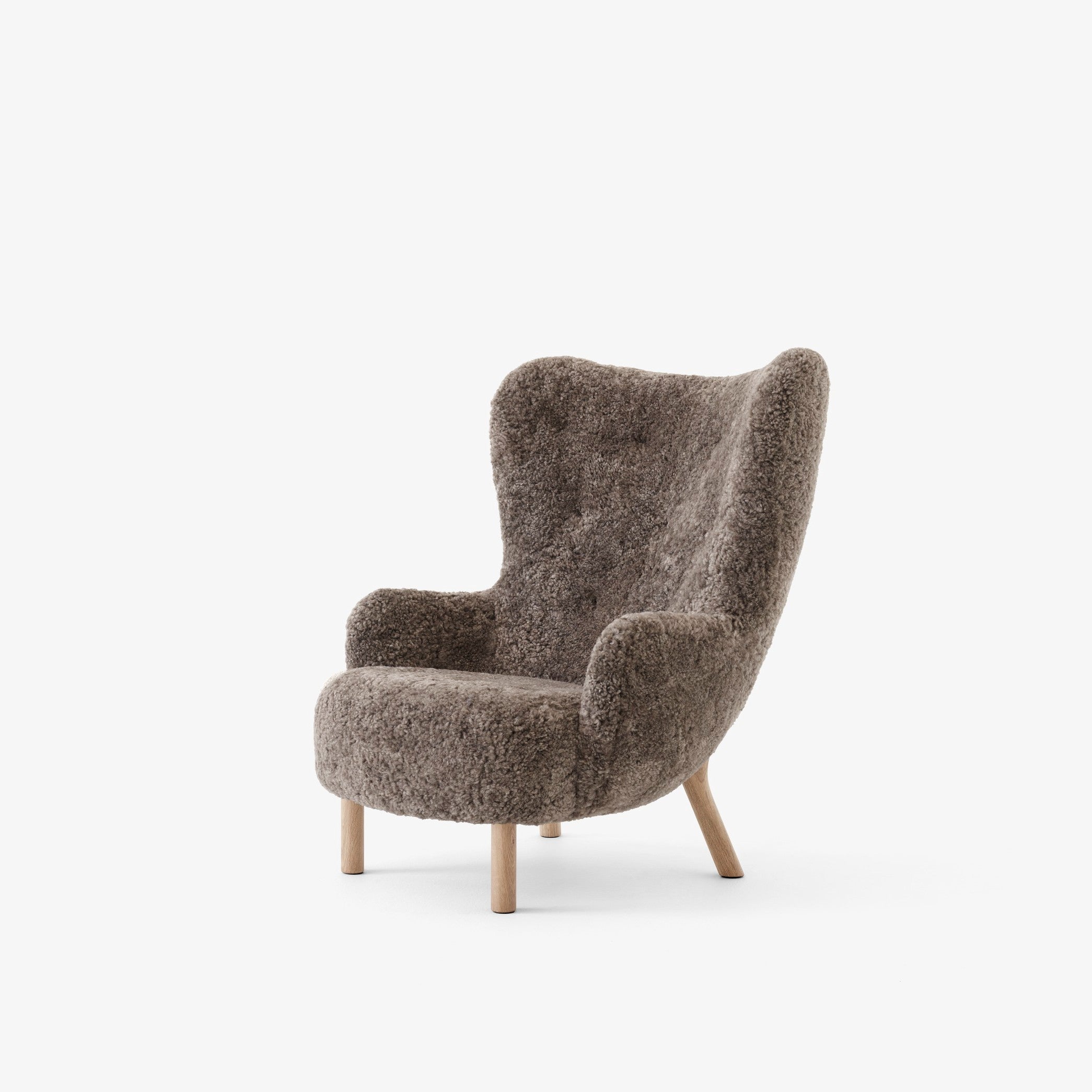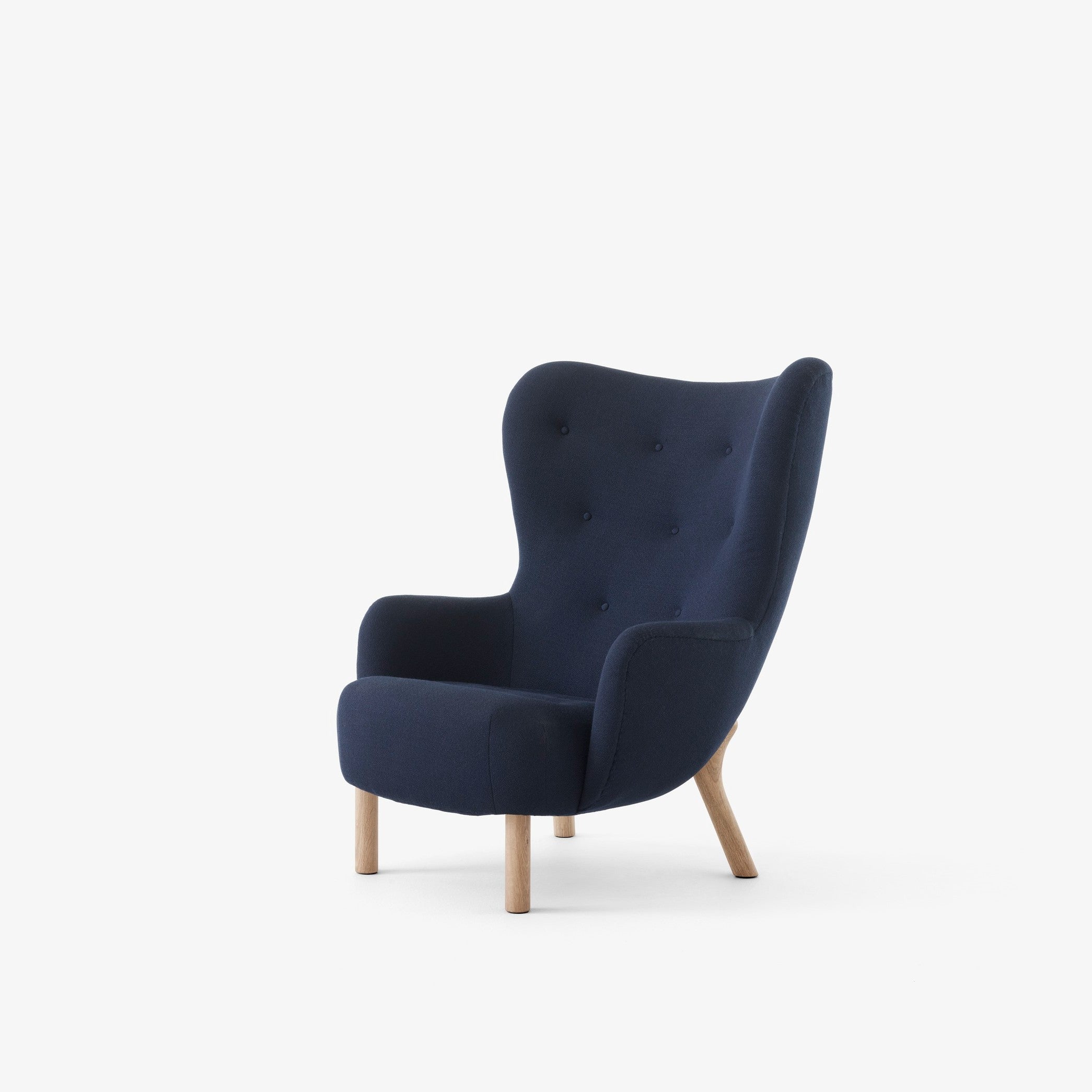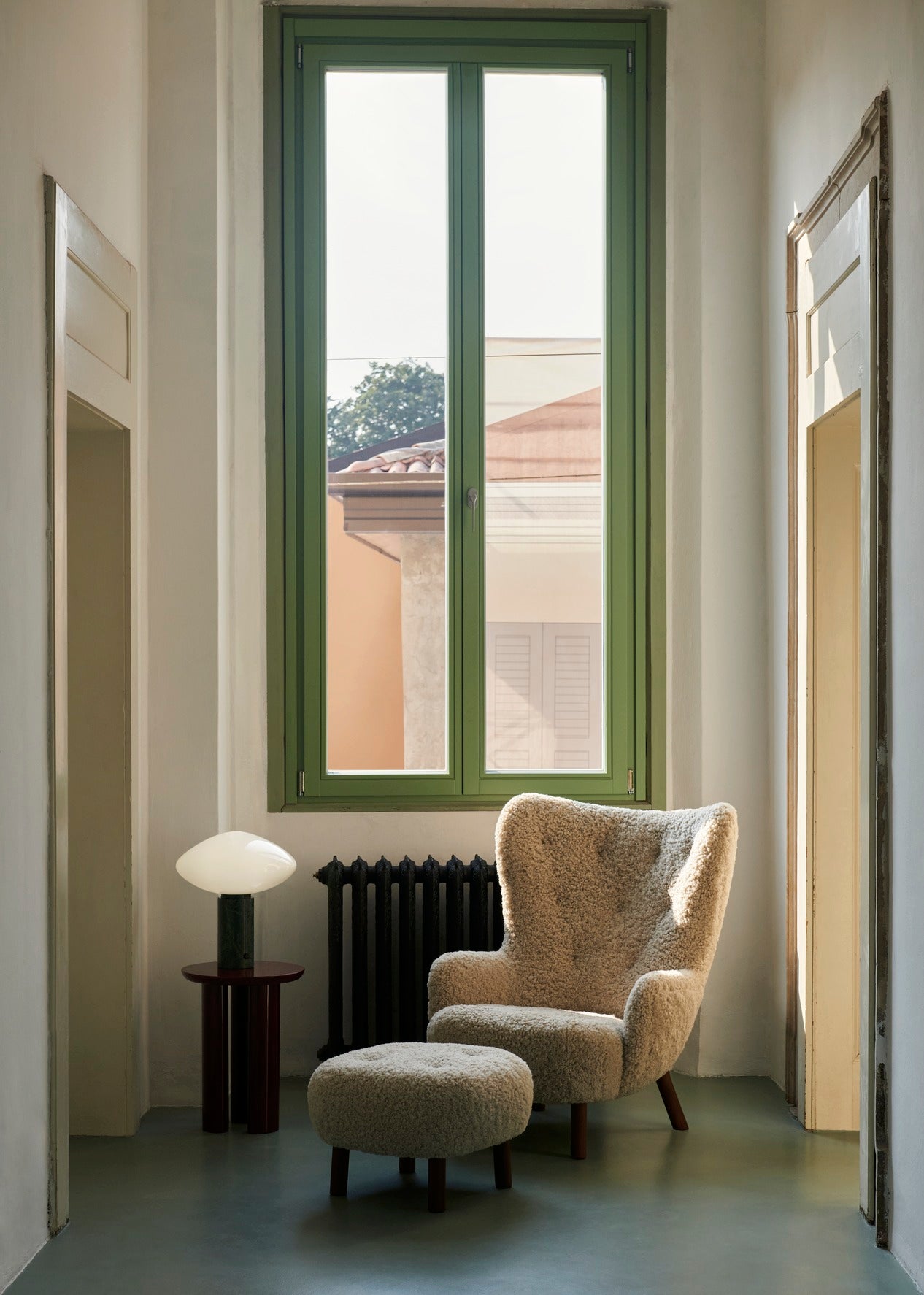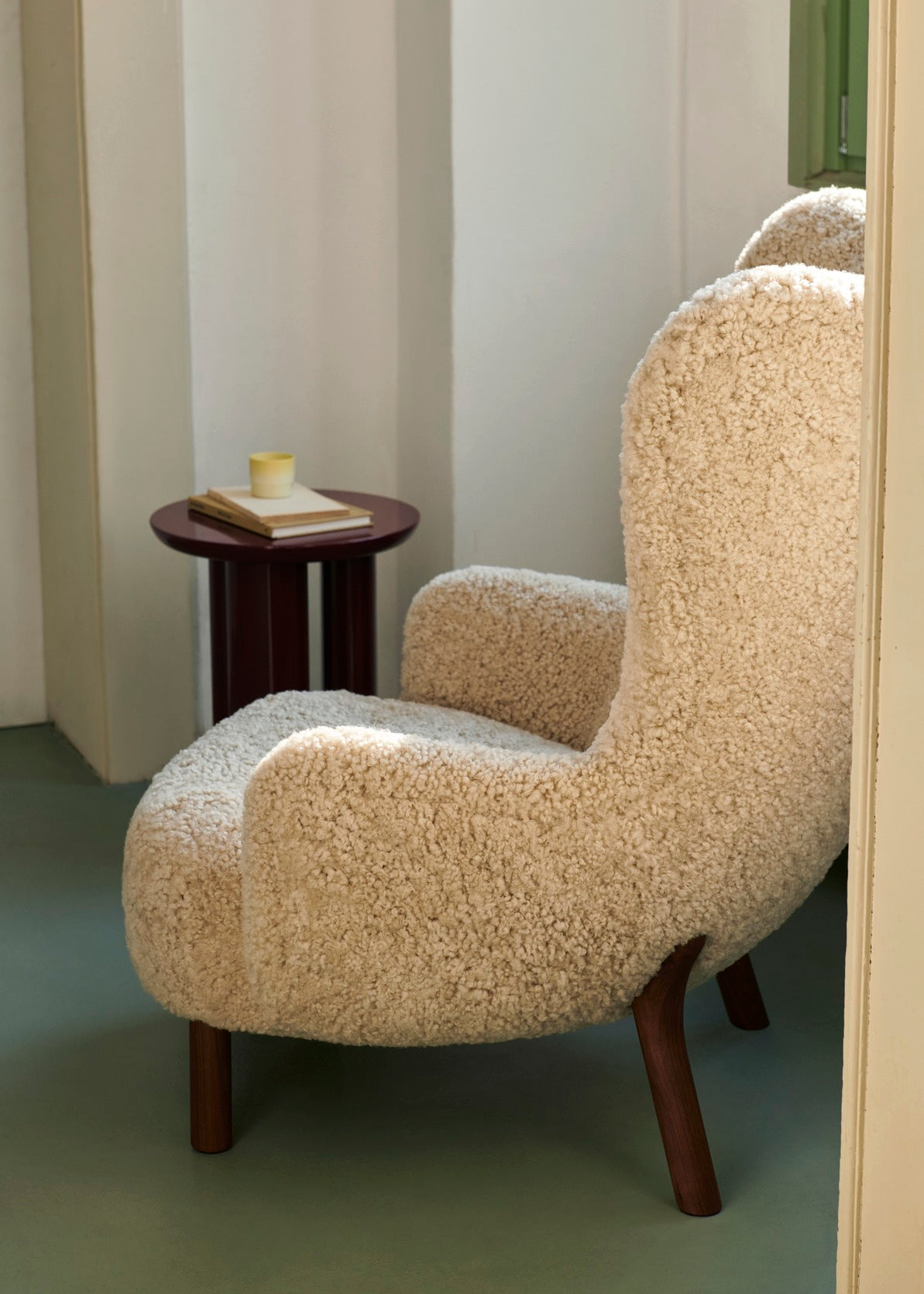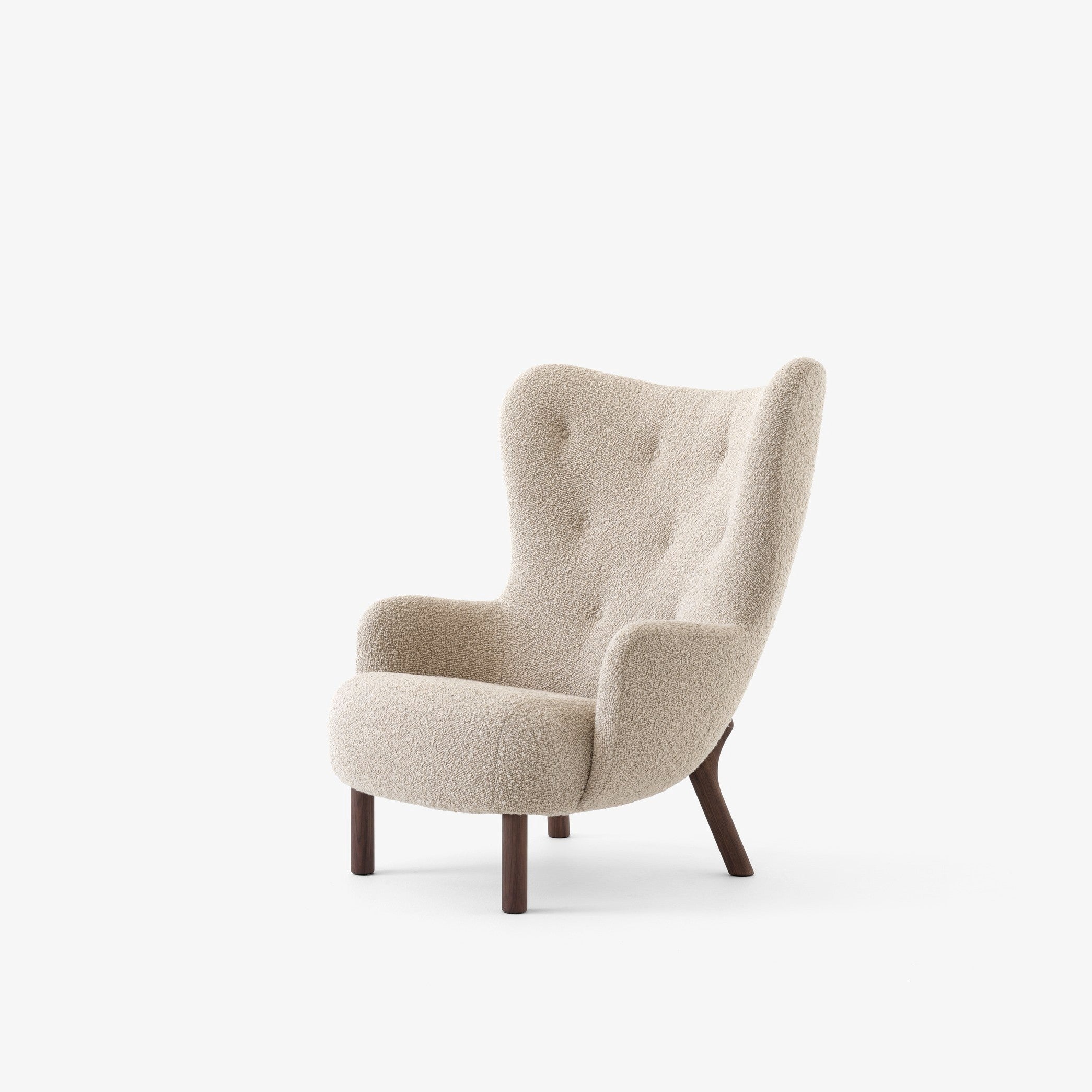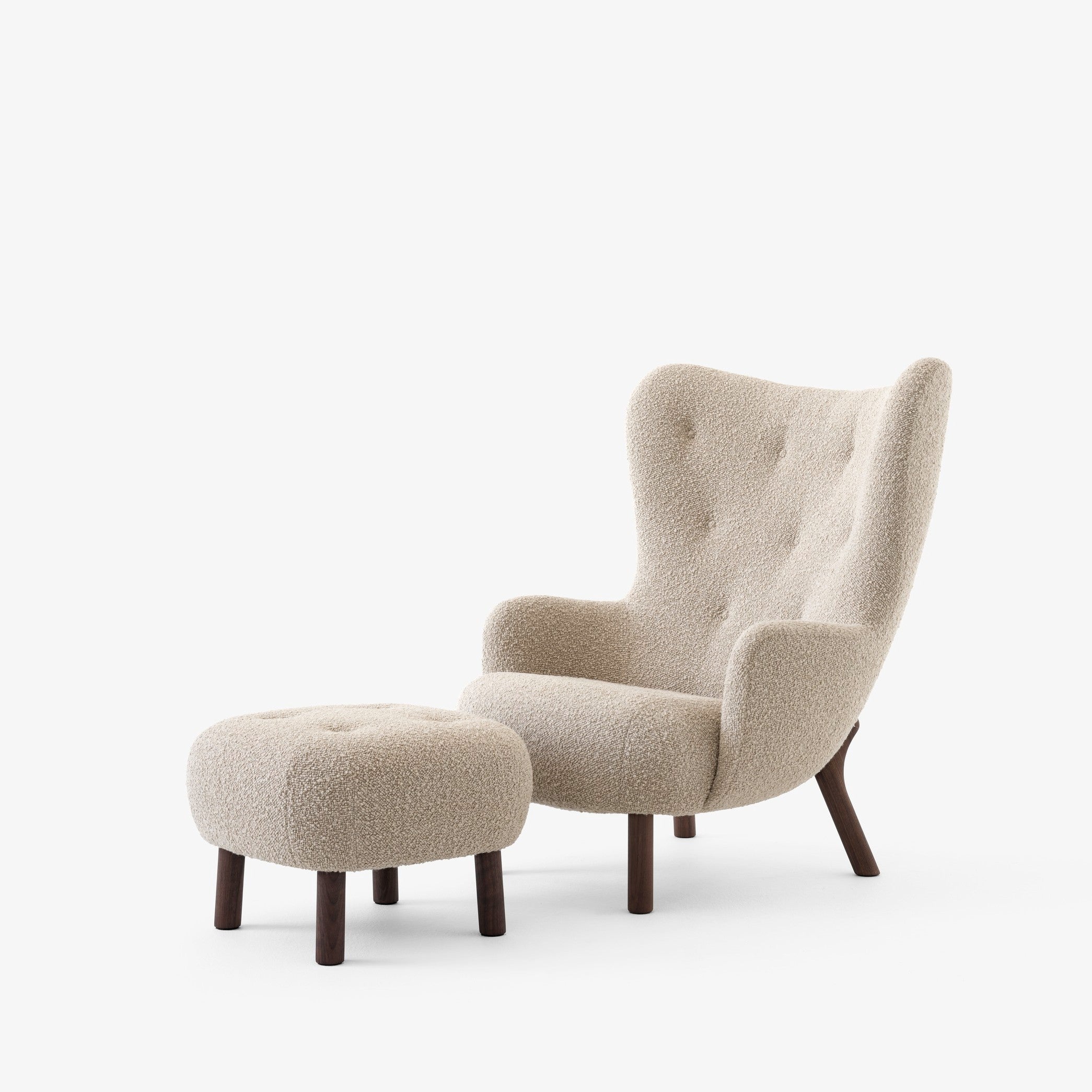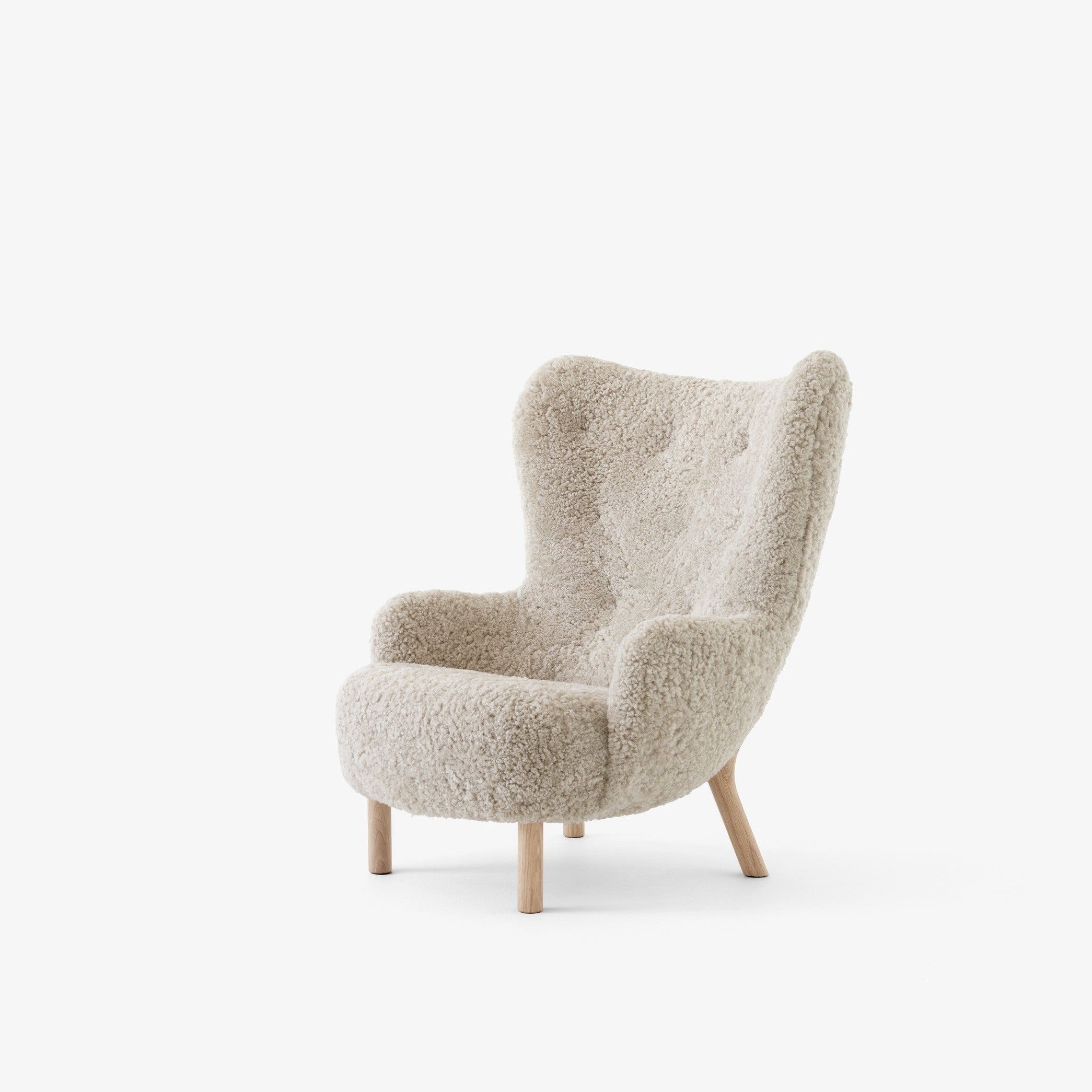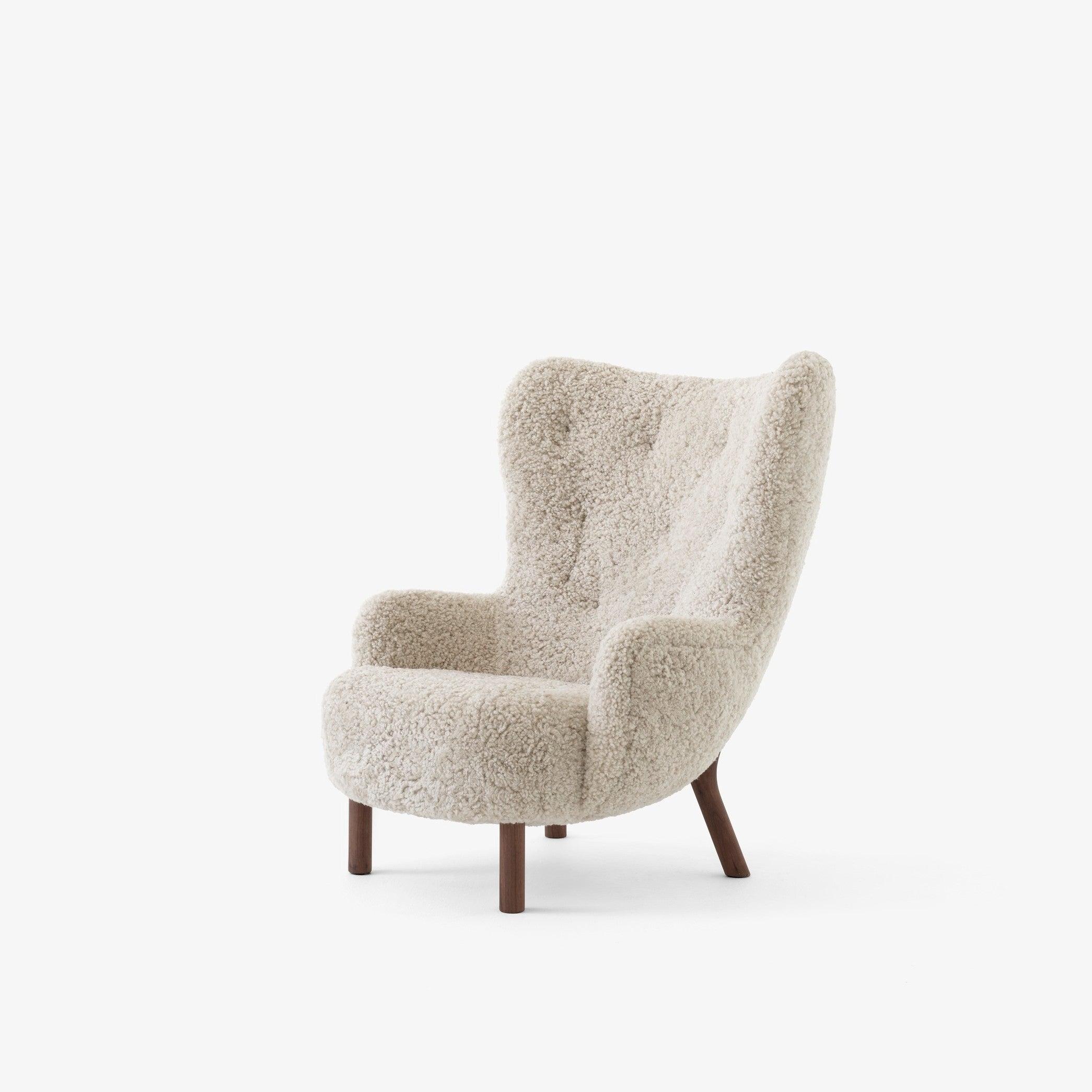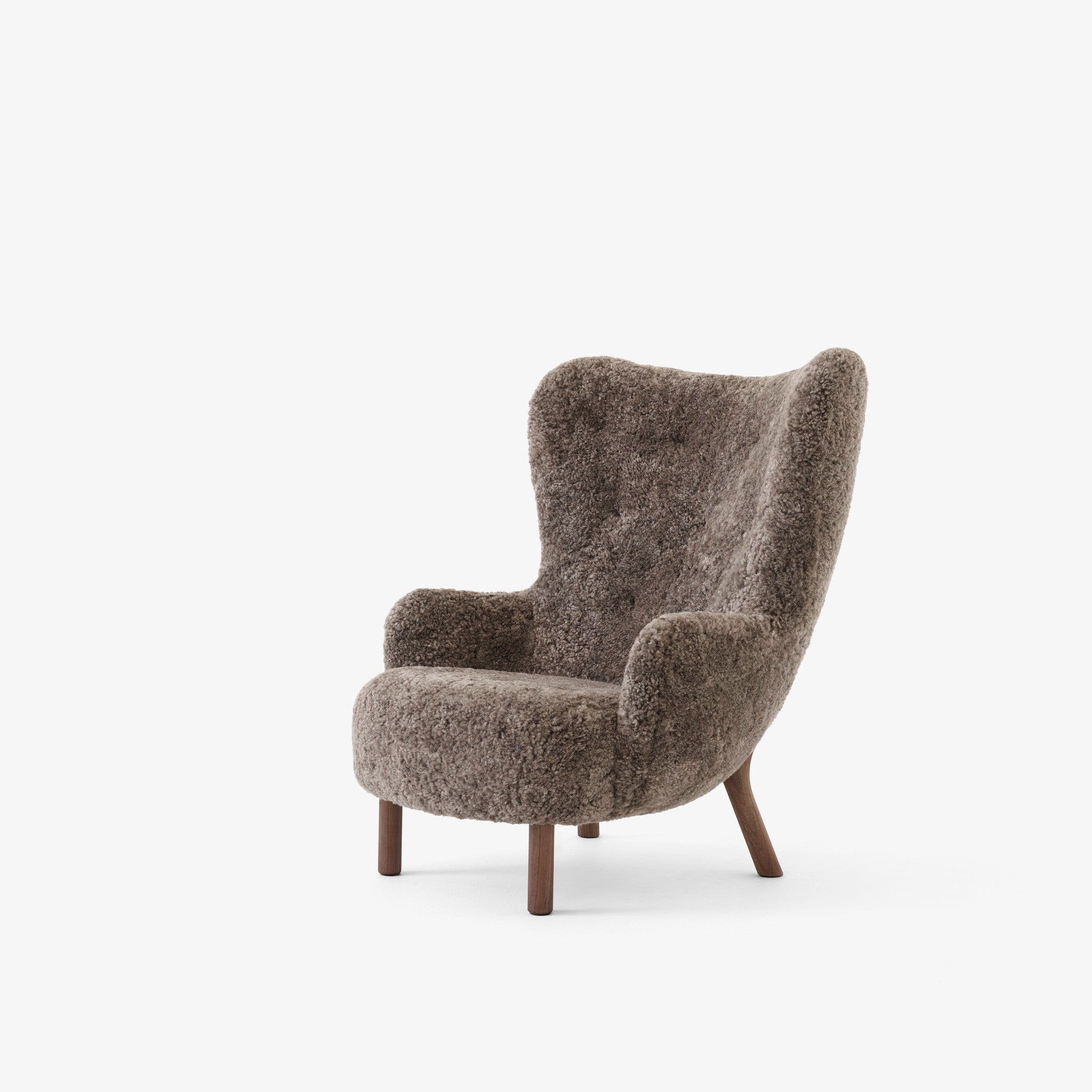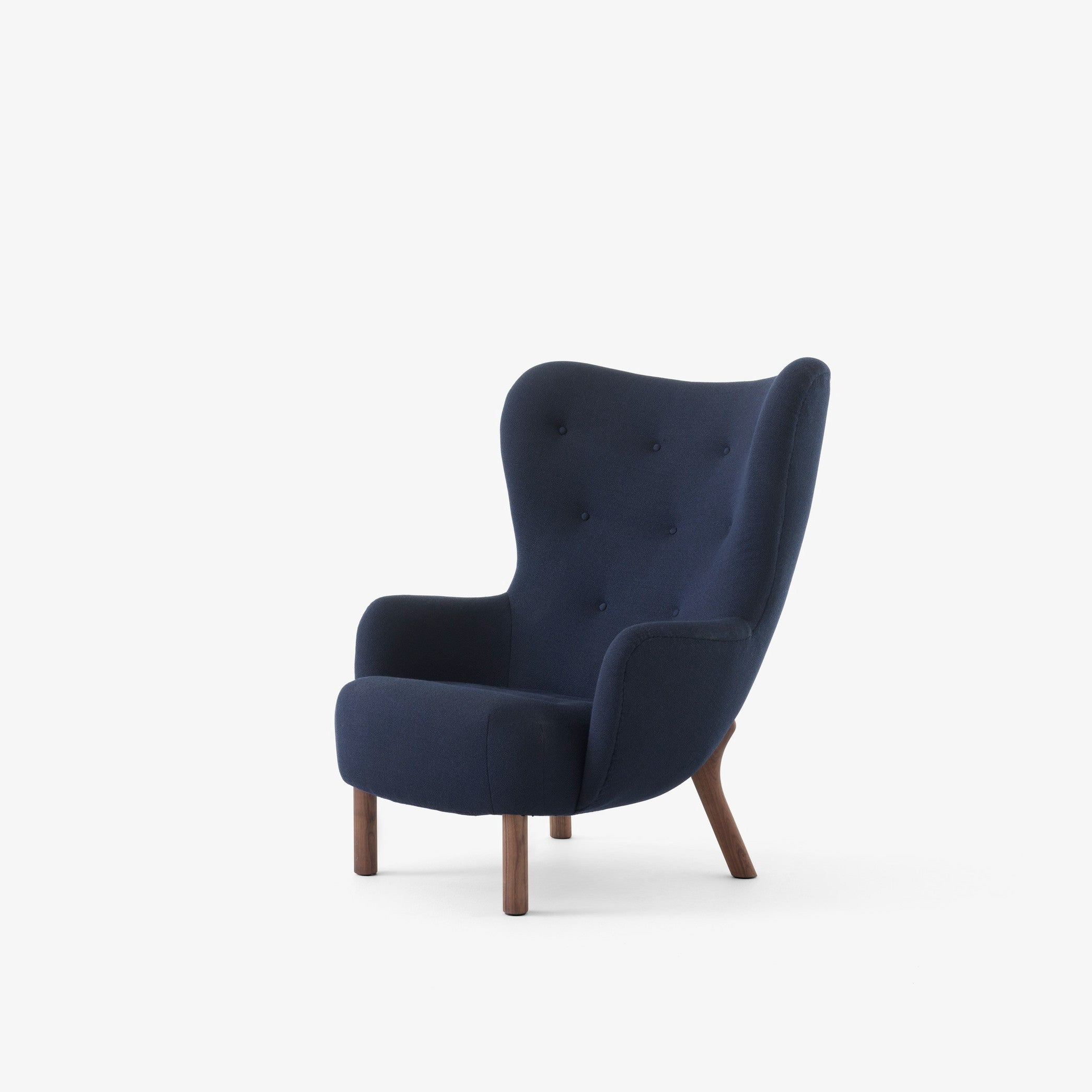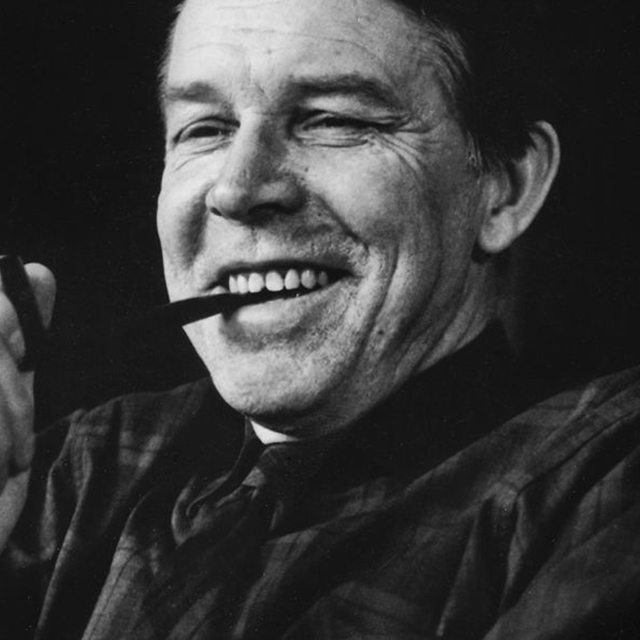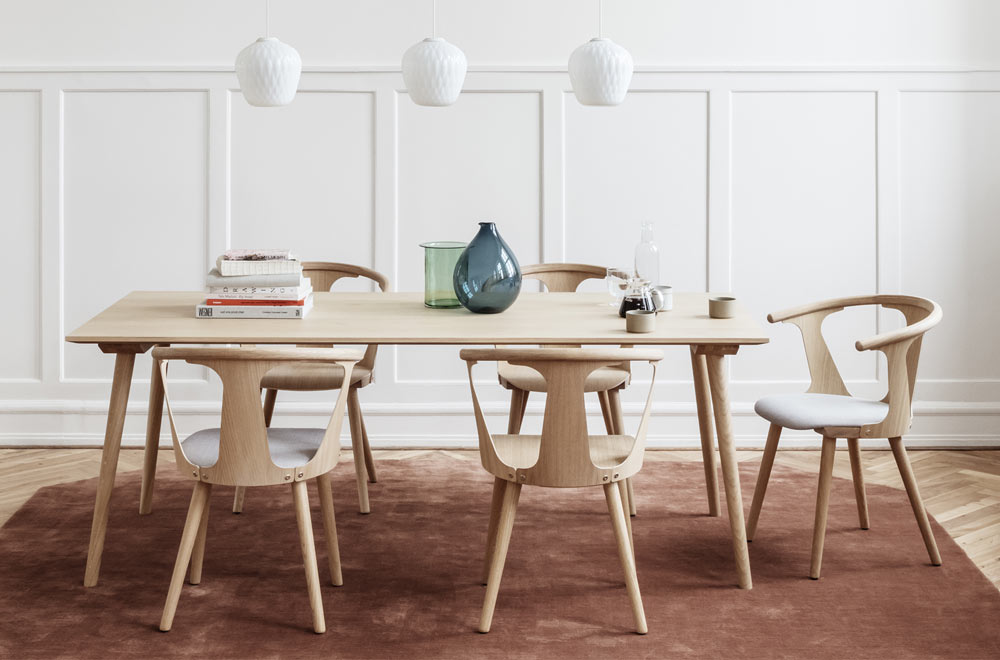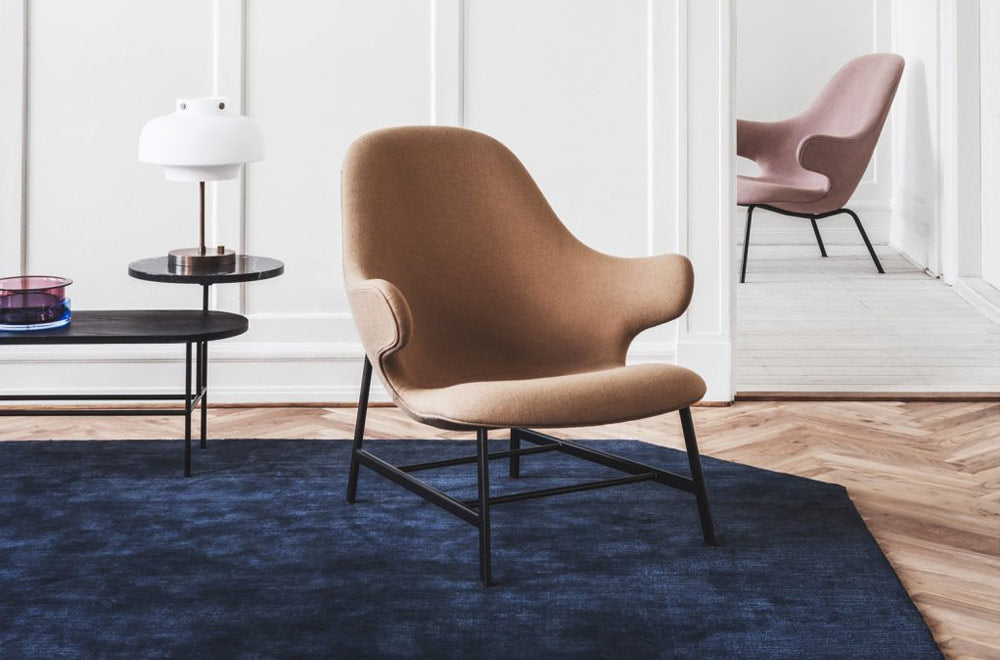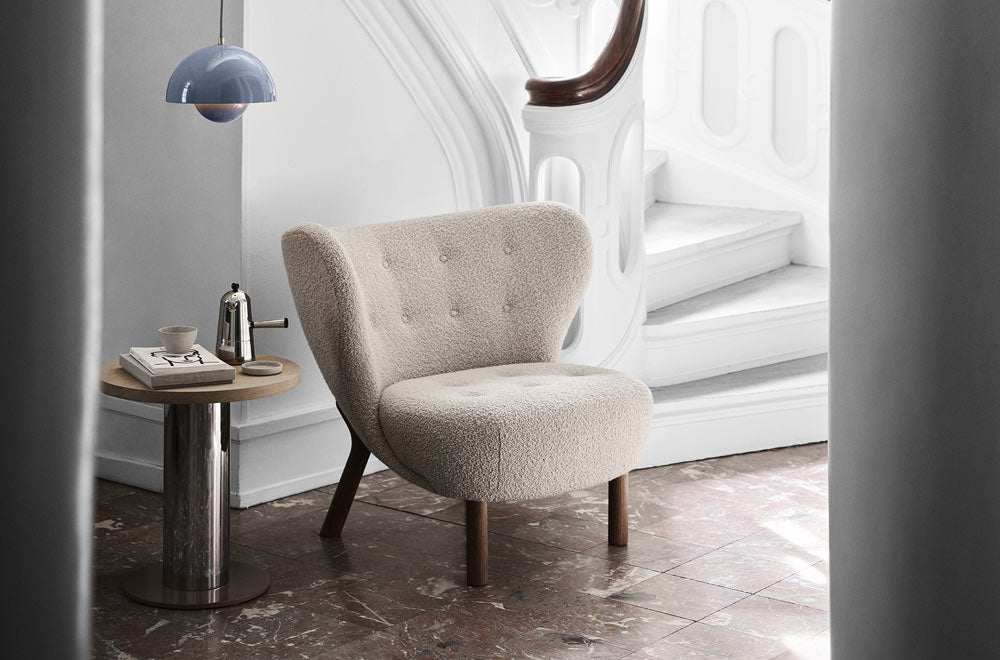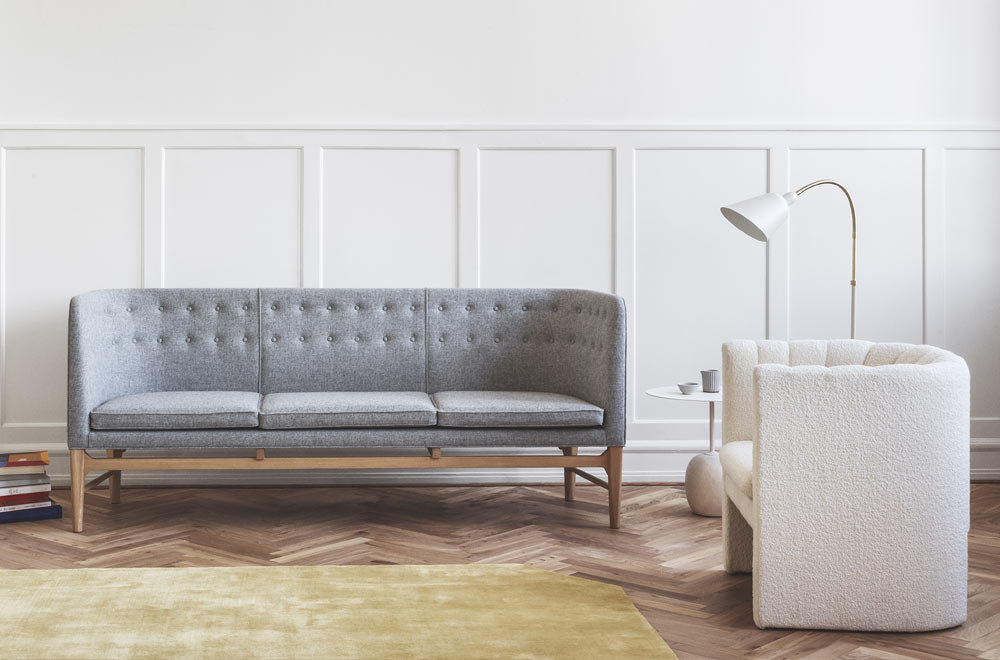Based on an original design by Danish designer Viggo Boesen in 1938, Petra is a lounge chair with a high-set, winged-backrest and unparalleled comfort. The Petra lounge chair follows the great success of Little Petra, named after Boesen’s mother-in-law, Petra – said to be a small woman with a big personality, her presence is felt in the embracing body of the armchair’s design. Petra now carries the same bold character and aesthetic but in a larger form.
Certifications
Made using FSC® certified wood, supporting responsible environmental, social and economical management of the world’s forests.
- Product Description - Lounge chair
- Environment -Indoor
- Dimensions - H: 99cm x W: 80cm x D:91cm
- Seat H: 40cm
- Seat D: 53cm
- Armrest H: 51cm
- Weight - 26.5 kg
- Gliders -The legs are fitted with felt gliders as standard
Product Material
- Wood, HR foam, polyester wadding, fabric upholstery
Production Process
- The frame is made from solid beech and plywood and subsequently covered in HR foam and polyester wadding. The solid wood legs are turned and CNC milled.
Upholstery
- Available with a variety of fabrics and COM
- As with most natural materials, differences in structure, density and thickness are expected, as two pieces of sheepskin never look identical and tend to show natural variations in both curls and tones.
Finishes
- Oiled Oak
- Oiled Walnut
- COM – Material Consumption
- Fabric usage: 4.4 meters based on 140 cm roll
- COM must be approved by &Tradition to ensure suitability for upholstery.
Viggo Boesen is a relatively little known architect who contributed to Denmark’s signature design aesthetic in the 1930s. In particular, his work reflected Scandinavian ‘Funkis’ style, a Nordic take on Art Deco. In contrast to massproduced materials and the less-is-more approach from the Bauhaus school of thought, Boesen brought a soft, warm and almost naive aspect to design, ushering in new forms of upholstered furniture.
Only a few of his designs were ever produced, yet Boesen’s original ideas, organic shapes and expressive design lingo were precursors to Denmark’s subsequent stance on modernism in the decades that followed.













